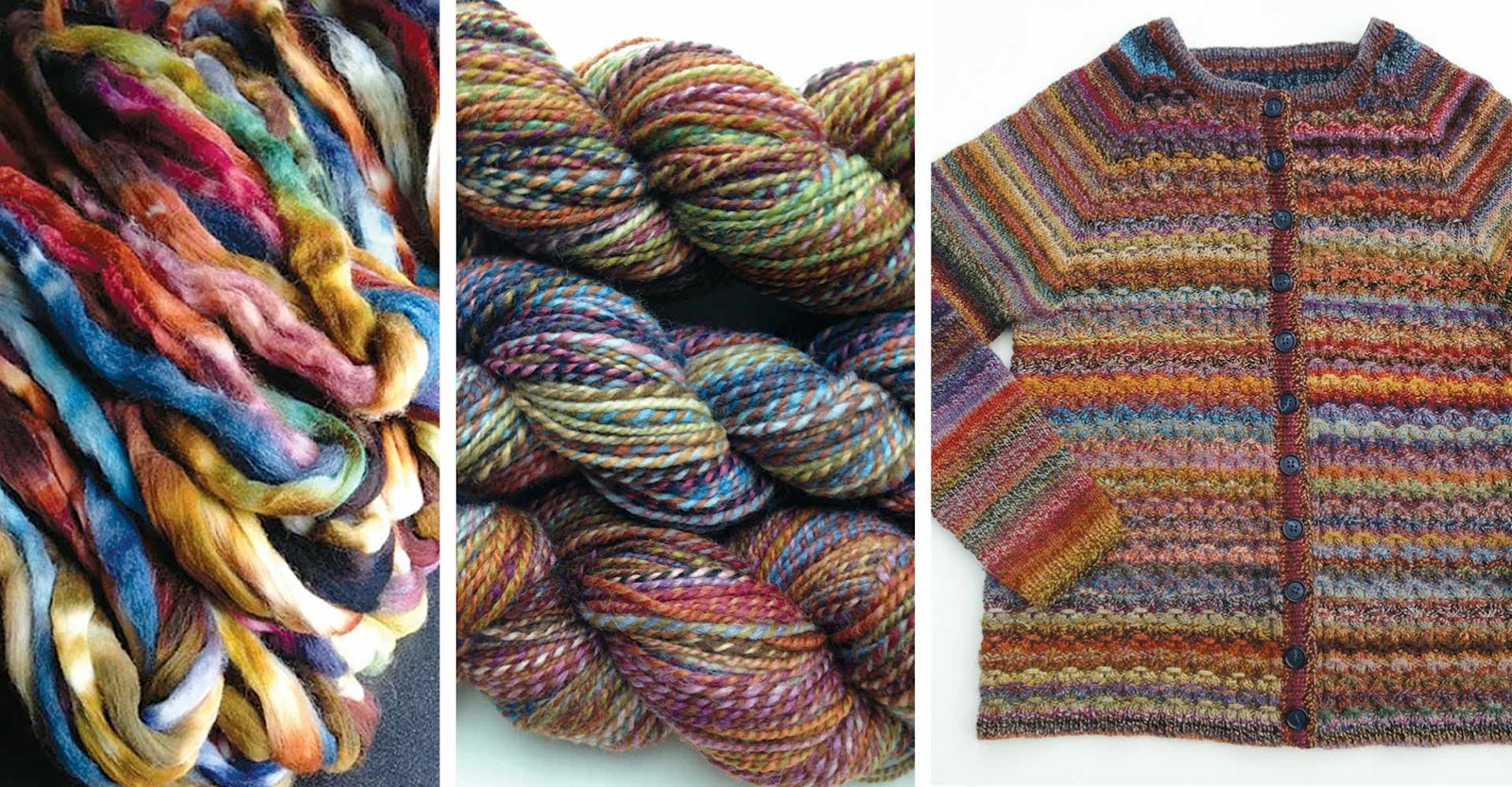Pattern and designer Classic Raglan Cardigan by Barbara G. Walker. The smocking stitch pattern is from A Treasury of Knitting Patterns (Schoolhouse Press edition, 1998) by Barbara G. Walker.
Fiber/preparation Six 4-ounce braids of fiber dyed by Hello Yarn. Each was a different breed: Rambouillet, Falkland, Bluefaced Leicester, Corriedale, Shetland, and South American blend. I folded each roving and broke it in half, then split each half into 8 strips so that I had 16 strips from each bag. I mixed all the fiber strips randomly into 16 “bundles.”
Wheel system/spindle Kromski Minstrel, double drive
Ratio 12:1
Drafting method Worsted
Singles direction Z-twist
Yarn 2-ply; 1,204 ypp; 13 wpi
Yarn classification/weight Sportweight
Total yardage 1,894 yards
Yardage used 1,400 yards
Needles U.S. size 4 (3.5 mm)
Gauge 22 sts and 28 rows = 4" in stockinette stitch; 30 sts and 28 rows = 4" in smocking stitch pattern
Finished size 39" chest measurement, after blocking
Tell us a little bit about the making of your project.
I watched a YouTube video by Tracy Lew, The Passionknit Spinner, in which she described her method of preparing fiber for a combo spin. I decided I wanted to use a sportweight yarn to make my cardigan, and I chose a stitch pattern for the body that would work well with a multicolored yarn. It took me about a month of daily spinning to finish spinning all the fiber.
What was your inspiration for this project?
I came across an article by Debbie Held [“Coordinating Handpaints: The No-Frill Method to a Cohesive Spinning Mashup,” Spin Off, Winter 2017] that discussed the combo-spin method, and after seeing finished garments on Ravelry, I knew that I had enough fiber to try this myself.
What was your favorite part of this project? What was the most challenging?
My favorite part of this project was seeing the colors combine, both during spinning and knitting. The most challenging part was spinning the various strips of fiber. When I finished spinning a strip of fiber, I randomly chose another strip, but often, I had to change my style of drafting to accommodate the different fiber. I quickly learned which fibers were my favorites. Despite the fiber differences, when I plied the singles, the finished yarn was cohesive, and it is not obvious in the knitted fabric that I used fiber from various breeds.
Photos by Lisa Fliss
Have a finished object to share? Tell us about it! Contact [email protected] to submit your project.

